What CAN you do with a pumpkin and some preschoolers? The answer is, just about everything! Science, math, literacy, sensory play, decoration... and don't forget our favorite part: eating!
 Every fall I take the kiddos to our favorite pumpkin store, Green's Produce, to see the gourds. It's a great field trip, with lots of hands on experiences for the children. Check out the variety of sizes, shapes, textures and colors! We sit in the straw and take cute fall photos and enjoy the cool air and fall scents.
Every fall I take the kiddos to our favorite pumpkin store, Green's Produce, to see the gourds. It's a great field trip, with lots of hands on experiences for the children. Check out the variety of sizes, shapes, textures and colors! We sit in the straw and take cute fall photos and enjoy the cool air and fall scents. I took this photo to amuse myself: the sign says "knuckle head pumpkins". Knuckle heads are a great source of entertainment!
Back at home we read about jack-o-lanterns, and decide how to carve ours. We vote on facial features, and the kiddos help scoop the seeds and guts out. Only the carving is an adult job.
We take more cute photos, this time for the J page in our individual alphabet book/photo albums.
Our jack-o-lantern and other gourds decorate the door step for the rest of October.
They make a nice addition to our Halloween pictures!
You might think that's about all a pumpkin is good for, but that's just the beginning! We incorporate pumpkins into our fall sensory play.
We learn a lot about pumpkins, reading books about how they grow, and making this cute bracelet, which I adapted from an idea I saw at a library story time. On a green pipe cleaner, the children make a pumpkin life cycle. They thread a pierced pumpkin seed, a foam "leaf", a yellow "flower" bead, a tiny green "pumpkin", then larger "pumpkins" in yellow and orange, and finally the largest ripe orange "pumpkin." The pipe cleaner is twisted around itself, and the ends are curled around a pencil to create "tendrils".
In early November I start roasting the pumpkins, so we can cook with them. I halve the pumpkins, remove (and roast) the seeds, and cook the pumpkin halves at 350* for about an hour, until they are tender. I scoop the cooked flesh out, and puree it. The big red pumpkin you see on my doorstep cost $8, and yielded 30 cups! That's only 27 cents per cup, for a super nutritious food.
According to http://nutritiondata.self.com/facts/vegetables-and-vegetable-products/2601/2, pumpkin "is low in Saturated Fat, and very low in Cholesterol and
Sodium. It is also a good source of Vitamin E (Alpha Tocopherol),
Thiamin, Niacin, Vitamin B6, Folate, Iron, Magnesium and Phosphorus, and
a very good source of Dietary Fiber, Vitamin A, Vitamin C, Riboflavin,
Potassium, Copper and Manganese."
The children help to cook pumpkin gingerbread muffins...
...and eat them! Here is my recipe.
With more pumpkin puree than sugar in every batch of muffins, these are
super healthy, almost half vegetable, but they taste like dessert. We
usually make 72 mini muffins at a time, and they magically disappear!
The week of Thanksgiving, the children each make a pumpkin pie, which
they take home to share with their families. The children are so proud
to contribute to their family feast!
 | ||||
While the pies are baking, we pretend to do more cooking, getting another use out of empty spice containers and a fine motor work out too.
You might think we've finally exhausted the learning from our pumpkins, but there is still more! Jack-o-lantern pumpkins aren't so good to eat, and after carving, they start to decay. What good is a slimy disintegrating mess? Surely it is time to toss the last vestiges of Halloween into the trash can?!
Well, no. There is a cycle to life, one we are usually very disconnected from, and that most adults have learned to ignore. Children are true scientists, interested in everything, wondering and observing and learning all the time, so we keep our jack-o-lantern pumpkins a little longer, in the fallow areas of the vegetable garden.
Hidden away inside those last pumpkins, tiny seeds are waiting, ready for spring. Some of them will grow into new plants...
Early next summer we'll see vines reach across the garden, and flowers bud, bloom, and wilt. We'll taste the male flowers - they are good to eat too!
Yes, pumpkins do have separate male and female flowers! When there is a female flower growing, I show the children the difference, and teach them to put the stamen from the male flower into the female flower before we eat the petals. We want those female flowers to grow us another pumpkin, so we can watch the whole life cycle again!
If you are looking for classroom ready pumpkin learning activities, please see these resources in my TeachersPayTeachers store:


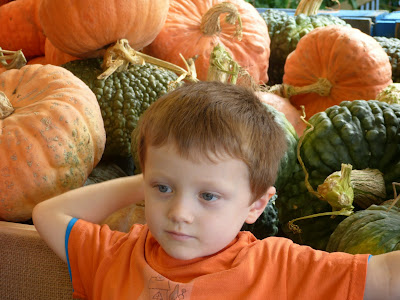
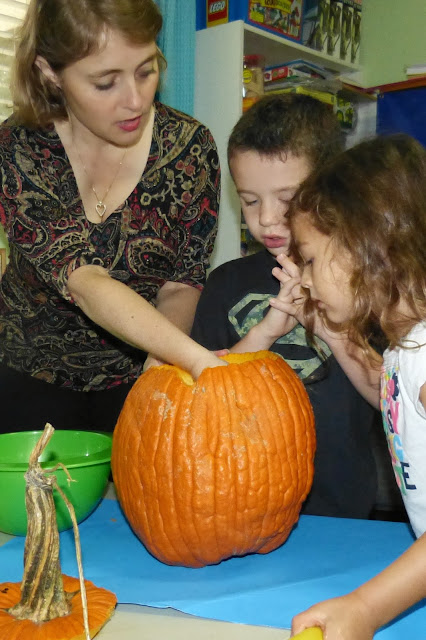





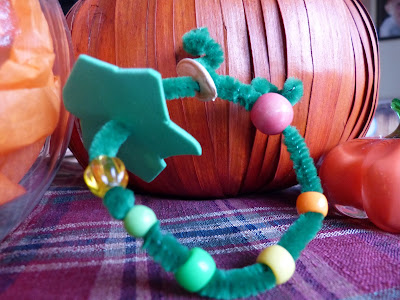





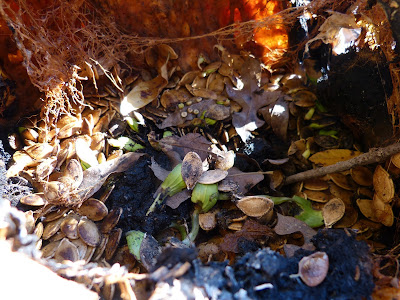

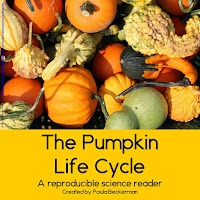

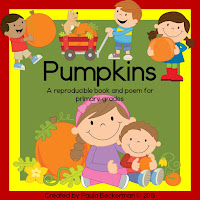

No comments:
Post a Comment